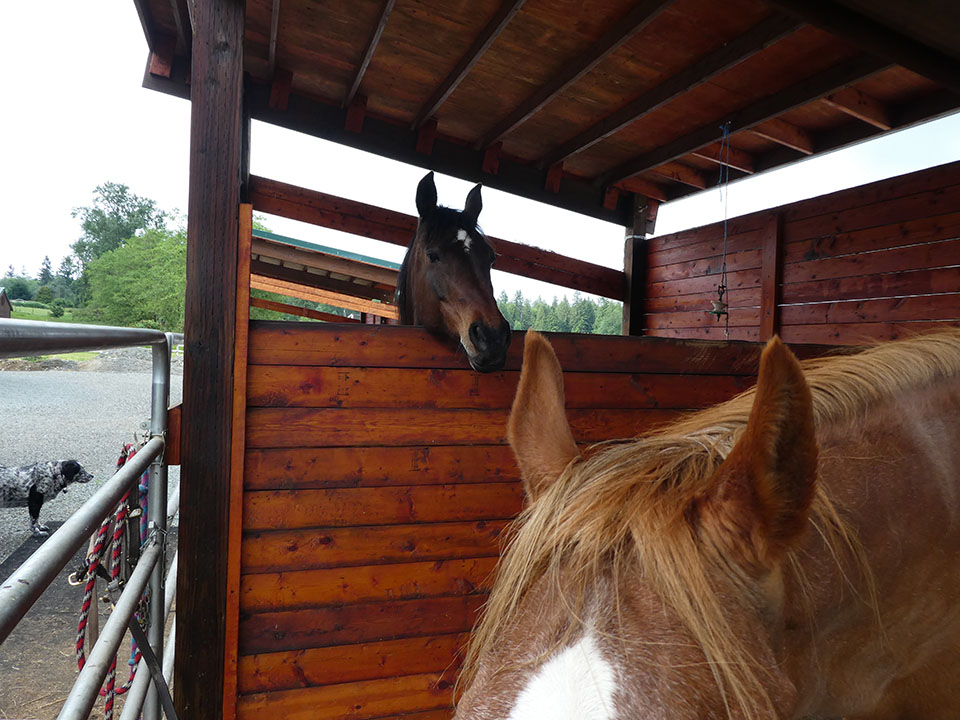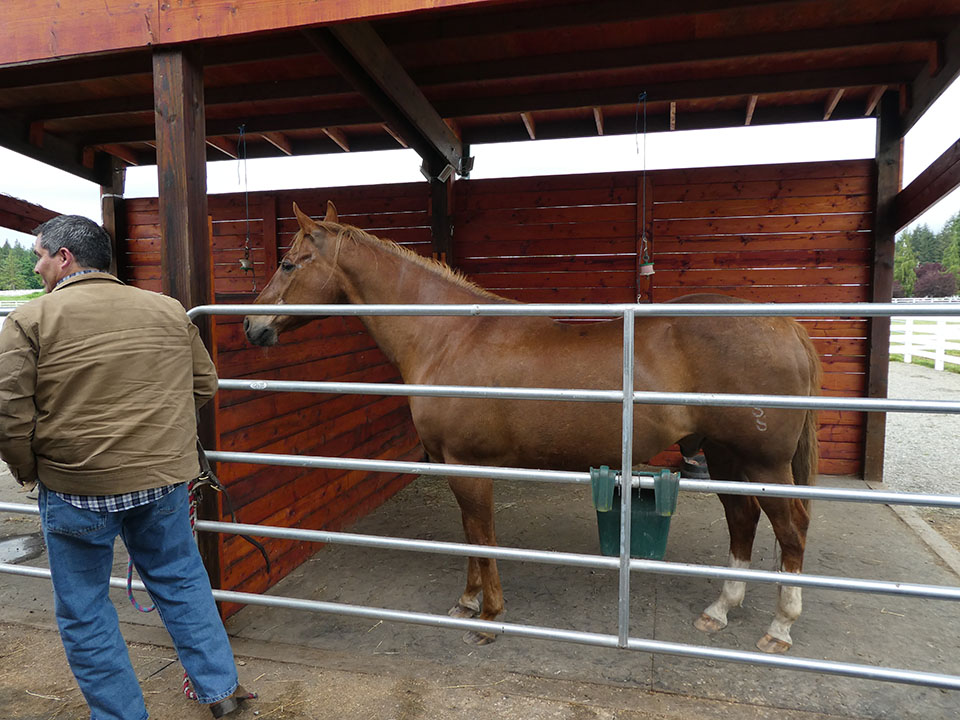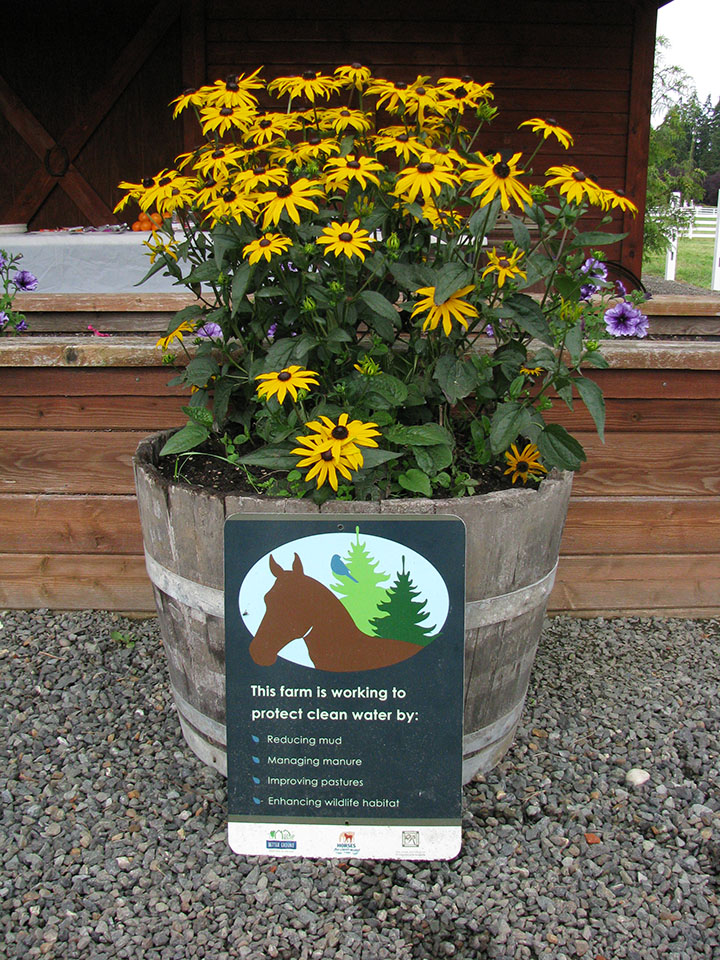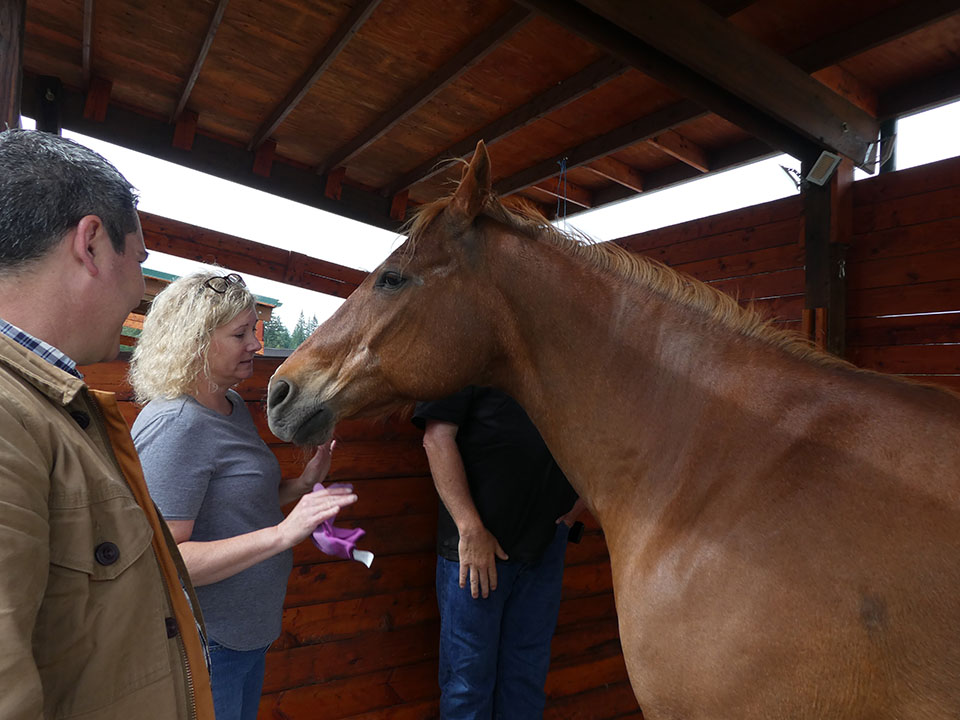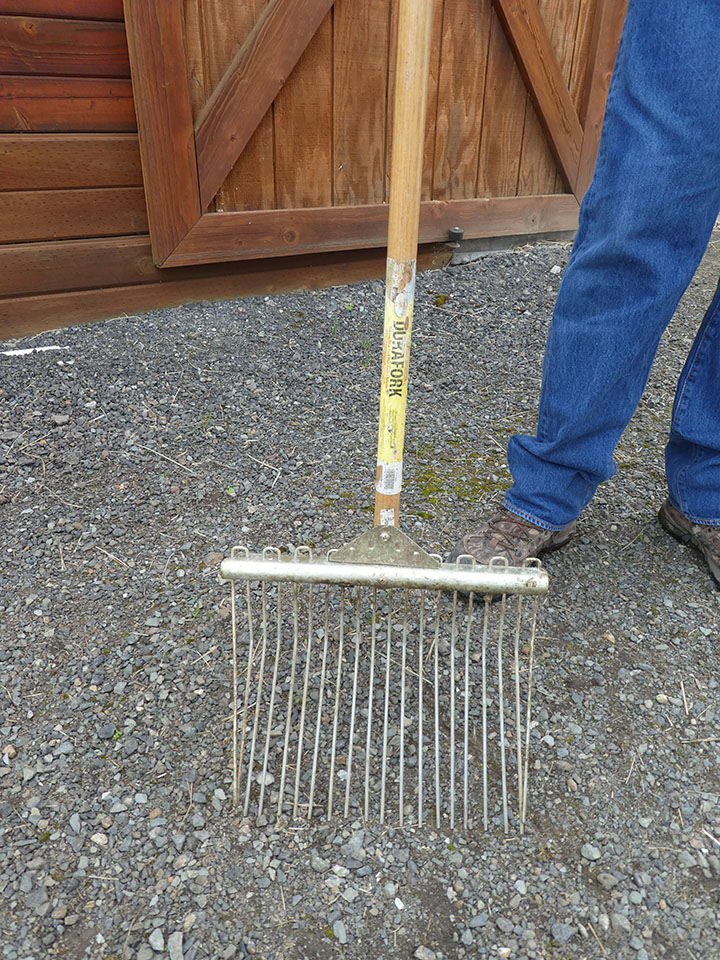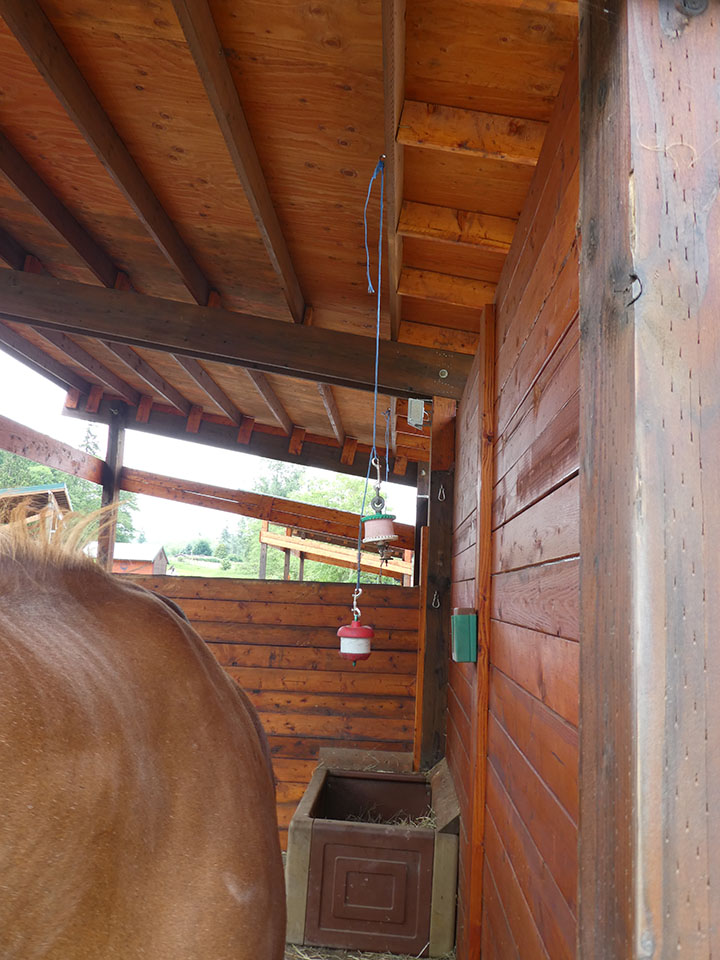Tania & Bob Partridge, A Mud-free and Super-efficient Horse Farm
/“I don’t want mud!”, declared Tania Partridge about her horse farm in the Stillaguamish River valley. And now they don’t have it. Since their heavy use areas (winter paddocks) were installed last year, along with covered manure composting bins, their mud issues have improved 100%, and so have other challenges of keeping horses.
Tania and Bob worked with the Snohomish Conservation District and the WA Dept. of Ecology in 2015 and 2016 to address water quality concerns. The couple installed roofed manure bins, fenced paddocks, and a grass filter strip along a ditch that leads to the Stillaguamish River. Chore efficiency and future layout modifications were also incorporated into the design.
The gravel and sand paddocks are easy to pick and, when done daily, stay clean and drain well. Bob and Tania use a metal manure fork that they say is durable and works better than others they’ve used in the past.
The paddock gates are designed to create a run between the barn, the paddocks, and one of the pastures to safely and easily move horses between these areas, and to provide maneuvering room for large trucks.
Tania and Bob added run-in shelters and rain barrels to the paddocks to provide water to their horses. They simply open the rain barrels’ spigots to refill the stock tanks as they pick the paddocks each day.
The paddocks are designed to be easily modified. The wall between adjoining shelters can be adjusted in height or taken down by easily removing/adding slide-in planks.
To save electricity, Bob installed solar-powered lights and hot wires for the fences.
Using the well-drained paddocks and addressing a few other areas that were prone to mud made rainy season much more tolerable. Not only did Tania and Bob no longer need to slog around as they cared for their two horses, Forrest and Peekaboo, they also didn’t see any evidence of thrush or scratches this year (the wettest winter in decades). The horses’ feet are better overall, even compared to the years when they rotated between pasture during the day and stalls at night. The new paddocks worked so well that the horses were only in their stalls on the coldest nights, and Tania and Bob saved a bundle on wood shavings, needing only about one cubic yard of shavings for the winter compared to about 40 yards in previous winters.
Tania did have some concerns at first about keeping her horses in the paddocks over the long winter, boredom being near the top of the list. She incorporated slow feeders, hay nets, balls, and cones (also used to keep horses from overusing small areas) to help keep them occupied. These helped, and Tania continues to search for more ways to provide enrichment when the horses aren’t on pasture.
One other concern was sand ingestion from the paddock footing, so they tested their horses’ manure and found very little evidence of sand. Not only was sand not causing a problem, Tania’s older horse, Forrest, really likes resting on it. When they refresh the paddock footing they’ll add enough sand to keep Forrest comfortable.
The best part of the new design? Whereas the evening clean and feed used to take an hour and a half, now it takes just 20 - 30 minutes! According to Bob, the whole system is “extremely easy and controllable”.
Tania and Bob summed up their experience with the chore-efficient, water quality-protecting design this way, “The horses are happier and healthier – plus, it’s better for the environment.”
